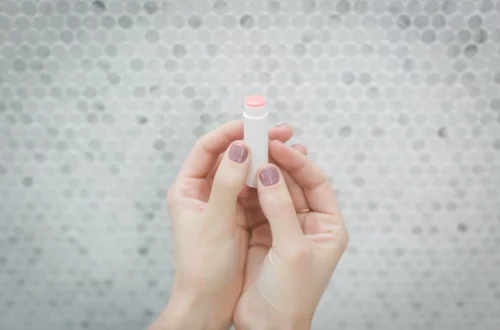
Understanding Vagina Bleaching: Safety, Methods, and Considerations
The concept of vagina bleaching has gained attention in recent years, as more individuals seek ways to enhance their intimate aesthetics. The practice, which involves lightening the skin around the vaginal area, is often promoted as a means of achieving a more uniform skin tone. However, this trend raises numerous questions regarding its safety, effectiveness, and ethical considerations.
Many people are curious about the reasons behind such a procedure. While some may wish to address natural pigmentation variations, others might be influenced by societal standards of beauty that emphasize a lighter skin tone. The desire for aesthetic improvements is not new; however, the methods and products available today have evolved significantly, leading to a wide range of options in the market.
Despite its popularity, vagina bleaching is not without controversy. Discussions surrounding the potential risks and side effects often accompany the exploration of this cosmetic treatment. Moreover, the availability of various products, ranging from creams to laser treatments, complicates the narrative surrounding the safety and efficacy of these methods. Therefore, understanding vagina bleaching requires a closer examination of the different techniques, their implications, and the broader societal context in which they exist.
What is Vagina Bleaching?
Vagina bleaching refers to the process of lightening the skin around the vaginal area, including the vulva and inner thighs. This practice is often pursued for cosmetic reasons, with individuals seeking to achieve a more uniform skin tone. The reasons behind this choice can vary widely, from personal preference to societal pressures regarding beauty standards.
The skin around the vagina can naturally be darker than other areas of the body due to various factors, including genetics, hormonal changes, and friction. While some individuals accept this natural variation, others may feel uncomfortable and seek to alter it. Vagina bleaching products typically contain ingredients that are designed to inhibit melanin production, the pigment responsible for skin color. Common ingredients in these products can include hydroquinone, kojic acid, and various botanical extracts.
Despite the allure of achieving a lighter skin tone, it is essential to approach vagina bleaching with caution. Many products on the market are not regulated, which raises concerns about their safety and effectiveness. Additionally, the potential for irritation and allergic reactions is significant, especially in such a sensitive area of the body.
The psychological impact of vagina bleaching should also be considered. The desire to conform to specific beauty ideals can lead to feelings of inadequacy or low self-esteem, particularly if the desired results are not achieved. It is crucial for individuals contemplating this procedure to weigh the benefits against the potential risks and to consider their motivations for pursuing such a treatment.
Methods of Vagina Bleaching
There are several methods available for those interested in vagina bleaching, ranging from topical creams to professional treatments. Each method comes with its own set of advantages and disadvantages, and understanding these can help individuals make informed decisions.
Topical creams are one of the most commonly used methods for vagina bleaching. These products are typically applied directly to the skin and are designed to lighten pigmentation over time. While some individuals report positive results, others may experience irritation, redness, or allergic reactions. It is essential to choose products specifically formulated for sensitive areas and to perform a patch test before full application.
Another popular method is laser treatment, which involves using focused light to target and break down melanin in the skin. This procedure is usually performed by a licensed dermatologist or cosmetic professional and can yield more immediate results compared to topical creams. However, laser treatments can be costly and require multiple sessions for optimal results. Additionally, there are potential side effects, including temporary redness, swelling, and changes in skin texture.
Chemical peels are yet another option, where a chemical solution is applied to the skin to exfoliate and promote new skin growth. This method can also help reduce pigmentation; however, it requires careful consideration and should only be performed by qualified professionals to minimize risks.
Before pursuing any method of vagina bleaching, it is vital to consult with a healthcare provider or a dermatologist. They can provide personalized advice based on skin type and individual health considerations. Furthermore, understanding the potential risks, side effects, and realistic outcomes can help individuals make choices that align with their health and aesthetic goals.
Safety Considerations and Risks
When it comes to vagina bleaching, safety should be a top priority. This practice can present various risks, particularly when using unregulated products or undergoing procedures without proper medical supervision.
One of the primary concerns is the potential for skin irritation and allergic reactions. The vaginal area has delicate skin that can be easily affected by harsh chemicals found in some bleaching products. Symptoms may include redness, itching, burning sensations, or even rashes. In severe cases, these reactions can lead to infections or long-term damage to the skin.
Hydroquinone, a common ingredient in many skin-lightening products, has been linked to significant health concerns. Prolonged use of hydroquinone can lead to a condition called ochronosis, where the skin becomes darker instead of lighter. This paradoxical effect can be distressing for individuals seeking to improve their appearance.
Furthermore, the psychological implications of vagina bleaching cannot be overlooked. The pursuit of an idealized appearance based on societal standards can lead to body image issues and affect self-esteem. Individuals should consider whether their motivations stem from personal preference or external pressures.
In addition, the lack of regulation in the beauty industry means that many products may not undergo rigorous testing for safety and efficacy. Consumers should exercise caution and conduct thorough research before selecting any bleaching product. Consulting with medical professionals can provide valuable insights and guidance, ensuring that decisions are made with health and safety as the foremost concern.
It is essential to remember that beauty standards are subjective and can vary widely across cultures and communities. Embracing natural variations in skin tone and celebrating diversity can lead to a healthier self-image and a more inclusive understanding of beauty.
Ethical Considerations in Vagina Bleaching
The topic of vagina bleaching raises significant ethical questions surrounding beauty standards and societal expectations. The pressure to conform to certain ideals can be overwhelming, particularly for individuals from marginalized communities who may feel compelled to alter their appearance to gain acceptance.
One of the primary ethical concerns is the potential exploitation of individuals seeking vagina bleaching. The beauty industry often markets products that promote unrealistic standards, leading consumers to believe that they must change their bodies to be deemed attractive or worthy. This can perpetuate harmful stereotypes and reinforce existing inequalities, particularly concerning race and gender.
Moreover, the normalization of procedures like vagina bleaching can contribute to a culture that values certain appearances over others. This emphasis on lighter skin tones can be particularly damaging in societies where colorism is prevalent, leading to discrimination and further entrenchment of beauty hierarchies.
Individuals considering vagina bleaching must critically reflect on their motivations and the societal influences that may be at play. It is crucial to challenge the notion that one must conform to specific beauty standards to be accepted or valued. Emphasizing self-love and body positivity can empower individuals to embrace their natural appearance and reject harmful societal pressures.
As discussions around body image and beauty continue to evolve, it is essential to promote a more inclusive understanding of attractiveness that celebrates diversity. Engaging in conversations about the implications of beauty standards can encourage individuals to make informed choices based on personal preferences rather than external pressures.
In conclusion, while vagina bleaching may appeal to some, it is essential to approach the topic with a critical eye. Understanding the safety, methods, and ethical considerations surrounding this practice can lead to more informed and empowered decisions.
**Disclaimer**: This article is for informational purposes only and should not be considered medical advice. Always consult a healthcare professional for any health-related concerns or questions.




